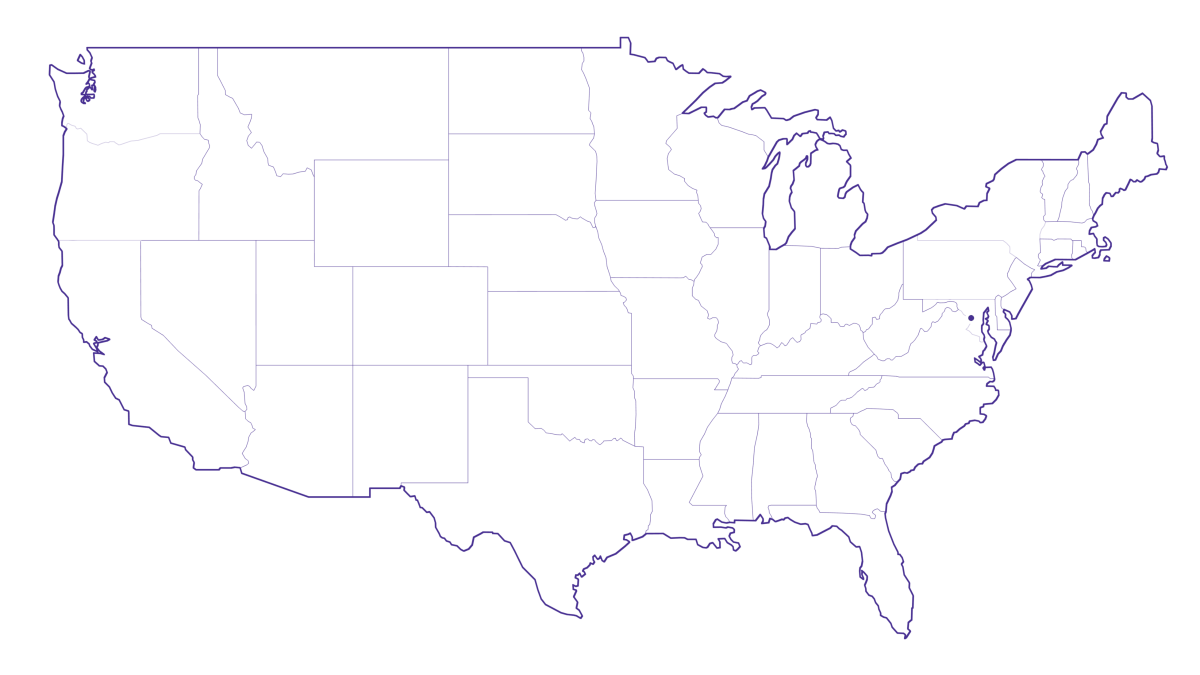Public WiFi risks: Why you should avoid using public WiFi

Public WiFi networks are a great alternative for internet access when you are away from your home network or have turned off your mobile data. However, they are often unencrypted and unsecured, making your personal information and online activities vulnerable to interception by cyber criminals.
By understanding the potential risks posed by public WiFi, you can take the necessary precautions to protect your privacy and avoid becoming a victim of online cyber crime.

eero Plus
eero Plus protects your family online with a password manager to safely create, store and share passwords, virus and malware protection and a VPN that lets you browse the web safely and securely.
Understanding public WiFi risks
Public WiFi networks are wireless internet access networks that are freely accessible to people in public locations like restaurants, libraries and airports. They can be open and require no password or establishments can offer a shared password for users to connect to the WiFi.
Despite its convenience, public WiFi lacks adequate security measures, exposing users to various internet security risks. The weak authentication protocols and lack of encryption allow cybercriminals to connect and intercept data transmitted over the network, gaining access to sensitive information such as a user’s login credentials and financial information.
Common threats on public WiFi networks
Identifying and understanding the various online risks that public WiFi networks pose can help you take steps to secure your data and devices. Here are some common cyber threats you may encounter when using public WiFi.
Man-in-the-middle Attacks
Man-in-the-middle (MITM) attacks are a form of eavesdropping in which hackers intercept communication between your device and the internet. Because public WiFi lacks encryption, hackers can embed themselves undetected in a connection stream. MITM attacks enable them to collect data or alter the connection by injecting malicious content.
Rogue Hotspots
These are fake WiFi networks set up by hackers to imitate legitimate public WiFi networks. They usually have names similar to those of actual networks, making it difficult for users to differentiate between them. When you unsuspectingly connect to a rogue hotspot, the hackers can monitor, access or redirect your data to malicious websites.
Packet Sniffing
Hackers use packet sniffing methods to gather data from users by intercepting data packets transmitted over a network. They use packet sniffing software and hardware tools to capture and analyze information such as emails, files and passwords sent and received across the internet.
Malware Distribution
Hackers can intercept public WiFi networks and exploit their vulnerabilities to inject and distribute malware into connected devices. Users can unintentionally download malware by clicking on malicious links or downloading infected applications and files. Once installed unknowingly by users, hackers can steal data, track user activities or even take control of the device.
Session hijacking
Session hijacking involves a hacker taking over a user’s web session cookie, usually by using the session ID used to authenticate a user on a website. After hijacking your session, they can access your online accounts and activities. Session hijacking can result in identity theft, unauthorized financial transactions and other fraudulent activities.
Switch & save
Astound is the #1 cable ISP
Stream live content, work, surf, game and connect to multiple devices with speeds up to 1500* Mbps through our ultra‑reliable fiber‑powered network.*

Real-life examples of public WiFi breaches
Public WiFi breaches have occurred in recent years, exposing the dangers posed by unsecured public networks and the need to be cautious to protect ourselves.
By examining some real-life examples of breaches, we can learn about the importance of implementing internet security practices. Here are some of the breaches that have occurred:
A Hacker Shows How Easy It Is to Take Over a City’s Public WiFi Network
In 2016, Amihai Neiderman, an Israeli hacker, discovered a buffer overflow vulnerability in Tel Aviv’s citywide free WiFi network that hackers could exploit to take full control of the network. He reported the flaw to the company responsible for distributing the WiFi routers and they patched the vulnerability in a subsequent firmware update.
Technology Writer Hacked When Connected To An Airline’s Public WiFi
Steven Petrow, technology writer for USA Today, was hacked by someone who was on the same flight as him. Steven was working on an article about a dispute between the FBI and Apple using the inflight WiFi provided by the airline when his files were hacked. The perpetrator explained to Steven that he had hacked him to give him a perspective on what it feels like to have personal information accessed without consent.
Fashion Show Mall Listed As Having Risky WiFi Networks
In 2016, a report by Skycure claimed that a Fashion Show Mall in Las Vegas had 14 risky WiFi networks, including evil twin networks. Evil twin networks are rogue WiFi access points that mimic legitimate hotspots.
These real-life cases highlight the importance of using caution and security best practices when connecting to public WiFi networks.

Steps to Protect Yourself on Public WiFi
Fortunately, you can implement some steps to protect yourself from public WiFi security risks. Some of the internet security measures you can take include:
Use Virtual Private Networks (VPNs)
A VPN adds a layer of security by encrypting your internet connection. It routes your traffic through secure web servers, making it difficult for hackers to eavesdrop and intercept your data.
Use a VPN to keep your online activities private and securely access information like emails and financial accounts.
Enable Two-Factor Authentication (2FA)
Enabling 2FA provides extra security for your online accounts, including social media security, by requiring a second form of verification in addition to your password. The extra steps to secure your accounts include sending codes via SMS or calls, authenticator apps or biometrics such as face scans. 2FA makes it challenging for hackers to access your accounts, even if they manage to steal your password.
Avoid Accessing Sensitive Information
Enabling 2FA provides extra security for your online accounts, including social media security, by requiring a second form of verification in addition to your password. The extra steps to secure your accounts include sending codes via SMS or calls, authenticator apps or biometrics such as face scans. 2FA makes it challenging for hackers to access your accounts, even if they manage to steal your password.
Keep Software And Apps Updated
Regularly updating your devices’ software and apps ensures you receive the latest security patches and bug fixes to secure your phone from hackers. Hackers often exploit vulnerabilities in outdated software to access your devices and steal data.
Utilize HTTPS Websites
Be vigilant when browsing online and only access HTTPS rather than HTTP websites. HTTPS is a web protocol that encrypts data between your browser and the website, providing an additional security measure. Look for the padlock symbol in the browser’s address bar to confirm the site uses HTTPS.
Use anti-virus and anti-malware software
Consider installing antivirus and antimalware software on your devices. This software can detect and remove malicious content that may have infected your devices while connected to public WiFi networks.
Disable the WiFi auto-connecting feature
Turn off the WiFi auto-connect feature on your devices to prevent them from automatically connecting to unknown public WiFi networks. Manually select which WiFi network you want to connect to.
Use mobile data or a mobile hotspot
Connect to your mobile data or use your phone as a mobile hotspot to provide internet to your devices. Mobile data connections use encryption protocols offered by mobile carriers to protect data transmitted by the cellular network. In addition, you have control over which devices can connect to your mobile hotspot by setting a strong, unique password and managing connected devices.
Learn more: How to secure your home WiFi
Conclusion: Stay Vigilant, Stay Secure
While public WiFi networks offer convenience, the online security risks associated with these networks can cause significant damage. Identifying and understanding common threats, such as man-in-the-middle attacks, rogue hotspots, packet sniffing and session hijacking, can help you proactively protect your devices and stay secure online.
Implementing security measures like VPNs and 2FA protocols, avoiding sensitive transactions and regularly updating software can further enhance your security and help mitigate these risks. Always prioritize your security and exercise caution when connecting to public WiFi networks.
Build your plan
Your perfect plan is just a click away
Get the speeds, WiFi, mobile and TV plans you need all at an affordable price. Bundle your services with Astound and see how much you can save.

Frequently asked questions
What should you not do on public WiFi?
Avoid accessing sensitive accounts like banking websites, emails or social media profiles to avoid hackers stealing your login credentials. Do not conduct sensitive transactions like online shopping, money transfers or accessing work materials over public WiFi without secure connections like a VPN. In addition, look out for the padlock icon on the address bar for encrypted websites.
Is public WiFi safe if it has a password?
A public WiFi with a password is still not secure and can be compromised. A password available to everyone risks a hacker intercepting the network and setting up man-in-the-middle attacks or packet sniffing to steal the user’s data
Create the perfect bundle
Get the speed, WiFi, mobile and TV that’s just right for you.
*Internet speeds may vary & are not guaranteed. Certain equipment may be required to reach advertised speeds. DOCSIS 3.1 modem with 2.5GE physical LAN port is required for 1 Gigabit speeds and higher. See astound.com/yourspeed for why speeds may vary. To view Astound’s FCC Network Management Disclosure see astound.com/policies-disclaimers. Limited time offer, subject to change without notice. Advertised promotional price valid for duration of the stated promotional period from time of service activation. Regular rates apply after promotional period ends. Equipment not included and is extra. Modem required for Internet service. Enhanced Wi-Fi or Whole Home Wi-Fi (eero) not included and is add’l. Offer includes a monthly discount for enrollment in both automatic payments (autopay) & paperless billing (e-bill). Discount of $10 applies with automated bank account deduction or a discount of $5 applies with automated credit/debit card payment. Valid email address required. Must complete enrollment in autopay and e-bill within 30-days of placing the order. Without enrollment, the discount does not apply. Discount appears on bill within 3 bill cycles after enrolling. If either autopay or e-bill is canceled, services are changed, or the account is not in good standing, then the monthly discount will be discontinued. Offer valid only for new residential Astound customers or previous customers with an account in good standing who have not had Astound service within the last 60 days. Any add’l services, equipment, premium channels & other tiers of service are subject to an add’l charge & regular increases. A one-time activation fee of $14.99 (in addition to any installation fees) will be charged & is subject to change. Add’l fees apply for taxes & surcharges, and are subject to change. WA RESIDENTS: unless otherwise specified, price does not include a 2% Regulatory Administration Fee. For details about taxes, fees & surcharges visit astound.com/fees. No early termination fees apply in the event service is terminated in advance of the promotional end date. Customer is responsible for any accrued service charges in the event service is canceled. Subject to credit check. Not all services & speeds are available in all areas. A multi-product discount may be available to qualifying addresses with a subscription to mobile, TV, and 600 Mbps Internet or higher. Discounts will be reflected in your order cart at time of purchase, if available. Other restrictions may apply. All services are governed by the Astound Customer Terms & Conditions that can be found at astound.com/policies-disclaimers. © 2025 Radiate HoldCo, LLC d/b/a Astound Broadband. All rights reserved.
While we have made every attempt to ensure that the information contained in this site has been obtained from reliable sources, Astound is not responsible for any errors or omissions, or for the results obtained from the use of this information. All information in this site is provided “as is”, with no guarantee of completeness, accuracy, timeliness and without warranty of any kind, express or implied, including, but not limited to warranties of performance, merchantability and fitness for a particular purpose. Certain links in this site connect to other websites maintained by third parties over whom Astound has no control. Astound makes no representations as to the accuracy or any other aspect of information contained in other websites.
eero Plus is available for an additional $9.99/month and requires subscription to whole home WiFi powered by eero.
















